Dead Sea clay facial soap is easy to make with these natural soapmaking techniques found in Jan Berry’s newest book, Simple and Natural Soapmaking
Soapmaking is often the gateway to homesteading. Making your own soap is a thrilling DIY craft that combines chemistry, botany, aromatherapy, and cooking skills to create something that didn’t exist before. When you make your own soap you control how mild it is. You can customize recipes for your own family removing allergens from the recipe. By using ingredients known to be healing and beneficial to the skin you can create amazing therapeutic soap that is better than the best store bought soap.
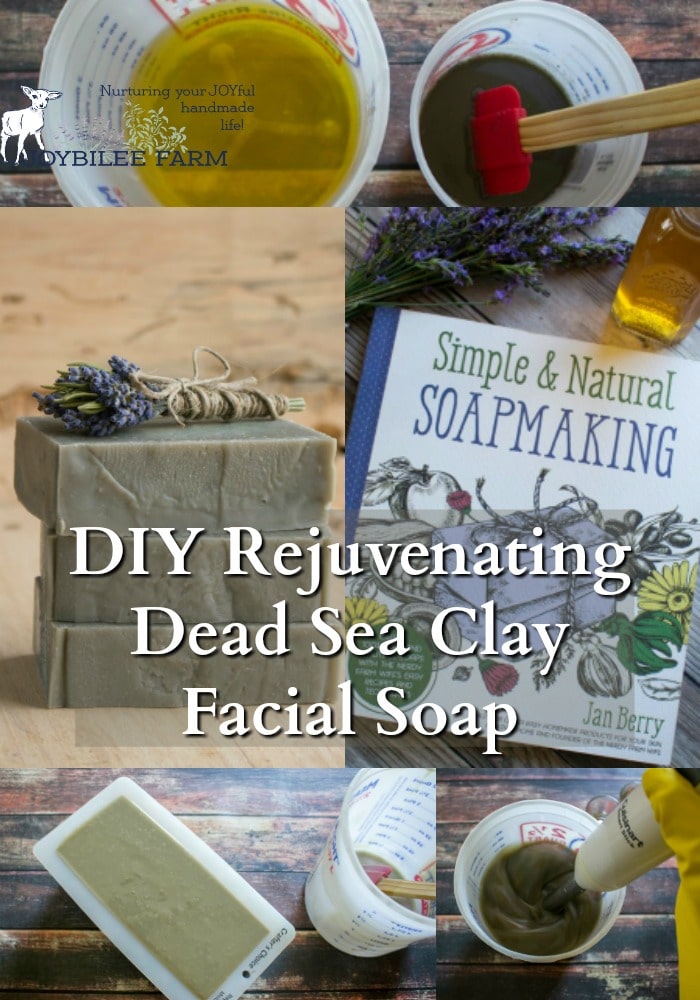
This soap, made with Dead Sea clay, is one of those therapuetic, skin rejuvenating soaps. My friend, Jan Berry’s new book, Simple and Natural Soapmaking, Create 100% Pure and Beautiful Soaps with the Nerdy Farm Wife’s Easy Recipes and Techniques (Page Street Publishing, 2017) is hot off the press. In it Jan shares her custom recipes for crafting soap using herbs, essential oils, and therapuetic carrier oils that not only cleanse but also rejuvenate the skin. I received a review copy of this book from the publisher and when I flipped through and saw Jan’s unique herbalist perspective on crafting natural soaps I was hooked.
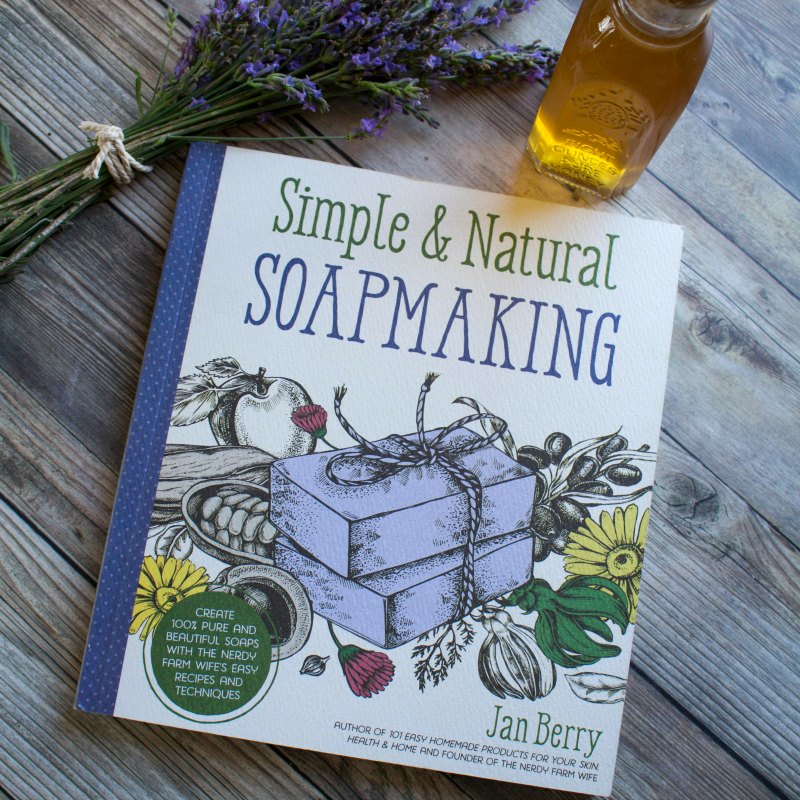
You might remember Jan Berry, The Nerdy Farm Wife, from her book 101 Easy Homemade Products For Your Skin Health and Home. Jan shared her elderflower eye cream recipe with my readers last year and it was popular among those of us, of a certain age. (wink).
Jan is a gardener, an herbalist, as well as a talented and creative DIYer. Soap making for Jan began as she was looking for allergy-free soap for her toddler. Her soap making is infused with herbal goodness, natural botanicals, clay, and natural colorants. The recipes are both beautiful and therapeutic. The beginning soap maker will find step by step instructions that remove the intimidation out of the soap making process. Both cold processed and hot processed soapmaking techiniques are addressed with easy recipes and step by step pictures that remove the guess work. The second part of the book includes more than 50 DIY soap recipes organized by themes like “soaps from the herb garden,” “soaps from the sea,” and “soaps from the apiary,” to name a few. But the final section of the book blew me away.
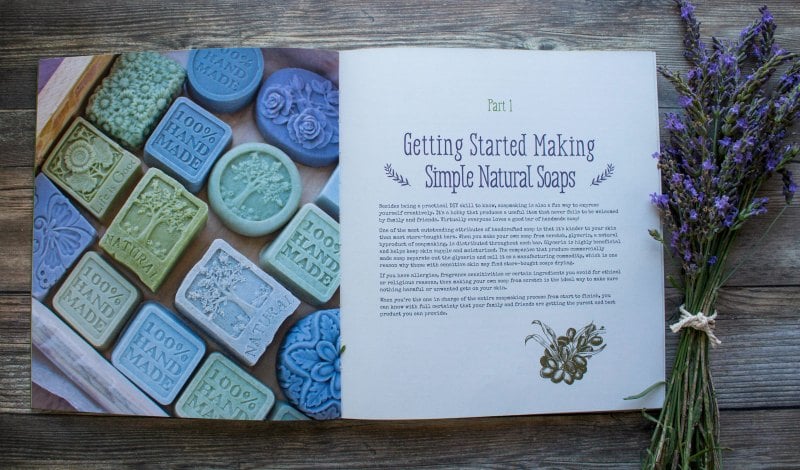
Using natural dyes in soap making
Part 3 of Simple and Natural Soapmaking, spills all the secrets. I recently saw an advertisement for 3 day workshop on using natural colorants in soap making. The in-person workshop was $395 and included a $90 lab fee. I was tempted to enroll. Although I’ve worked with natural dyes for years, and especially love working with Indigo and Woad, I’ve never experimented with combining my textile skills and love of natural dyes in my soapmaking.
Jan’s book changed that. Jan offers a complete blueprint with color pictures, that give you all the secrets for using natural dyes and natural colored clays in soap making. You won’t have to waste expensive ingredients while you experiment on whether to add the color to the lye phase or the oil phase in soap making. Jan takes the guess work away and even offers the exact proportions needed to achieve different levels of colour.
Since natural dyes have therapeutic benefits, many are antioxidants, using them as colourants in soap adds another layer of healing support to homemade soap.
Part 3 in Simple & Natural Soapmaking also offers tutorials on using essential oils, herbal infusions, and milk ingredients in natural soap making, so you can make soap that has all the benefits that you want in your own bars of soap.
Finally Jan offers tutorials to help you make beautiful soap bars that stand out in a sea of generic handmade soaps. You’ll learn advanced techniques that often mystify soapmakers, like how to layer soap, how to pour soap and swirl it to achieve that unique marbled look, and how to add artistic designs to the surface of your soap bars using various tools and botanicals. These tips and tutorials set this book apart from other natural soap making books.
You could easily pay hundreds of dollars to learn these professional soap making techniques at workshops. Add in the travel time and the expense of meals and hotel accommadation that can add up to thousands of dollars. Or you can get Jan’s book.
Jan holds nothing back in this, her second book, Simple & Natural Soapmaking. I’m got more to tell you about Jan’s new book and a sweet deal she’s offering to my readers, but first I want to let Jan share her recipe for Dead Sea clay facial soap bars. This recipe comes from Simple & Natural Soapmaking (p. 94-95) and all pictures are copyright to Jan Berry and used with permission of Jan Berry and Page Street Publishing. (Thanks for sharing this with my readers, Jan).

Dead Sea Clay Facial Soap Bars
Rich in minerals and nutrients, Dead Sea clay gently cleanses and tones dull flaky skin. Unrefined hemp seed oil subtly enhances the soap’s natural green hue while providing essential fatty acids. Lecithin-rich sunflower oil protects and soothes damaged skin, but sweet almond oil can be used instead for a similar effect. For a fresh clean scent, I chose a combination of calming lavender and camphorous tea tree essential oils, but you may wish to use an alternative blend or leave the soap unscented altogether.
Note: When making soap it’s important to weigh both the oils and the lye rather than using volume measurements.
YIELD: 7 TO 8 Bars of Soap (2.5 LBS/1.13 KG)
Ingredients:
- 8.5 oz (241 g) distilled water
- 3.95 oz (112 g) sodium hydroxide (lye)
- 11⁄2 tbsp (7 g) Dead Sea clay powder
- 8 oz (227 g) coconut oil (28.6%)
- 2.5 oz (71 g) unrefined hemp oil (8.9%)
- 14.5 oz (411 g) olive oil (51.8%)
- 3 oz (85 g) sunflower or sweet almond oil (10.7%)
- 0.85 oz (24 g) lavender essential oil
- 0.28 oz (8 g) tea tree essential oil
Directions:
Wearing protective gloves and eyewear, carefully stir the lye into the distilled water. Stir in the Dead Sea clay powder, then set the lye solution aside in a safe place to cool for about 30 to 40 minutes or until the temperature drops to around 100 to 110°F (38 to 43°C).
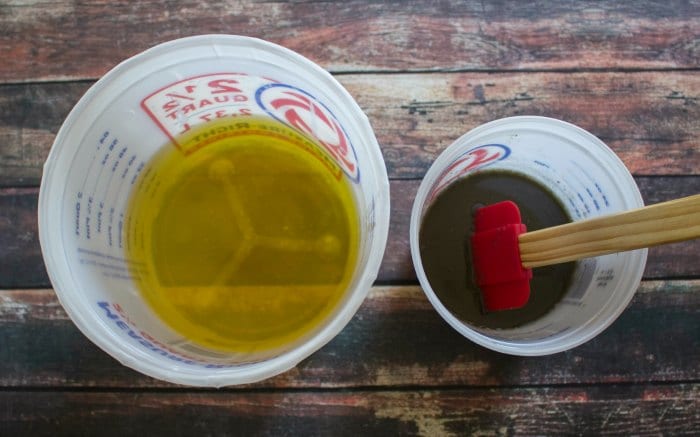
- Melt the coconut oil, then add to the other oils.
- Combine the warm oils with the cooled lye solution. Using a combination of hand stirring and an immersion blender, stir the soap until it reaches a light trace.
- At trace, stir in the essential oils, then pour into a prepared mold.
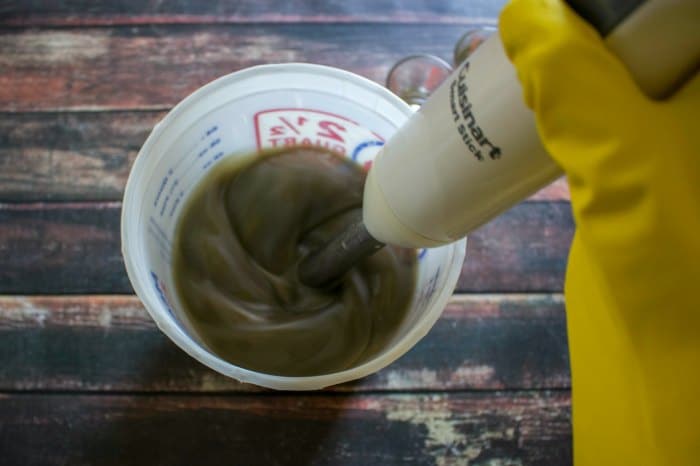
- Cover lightly with a sheet of wax or freezer paper, then a towel or light blanket. Peek at the soap every so often; if it starts developing a crack, move it to a cooler location.
- Keep the soap in the mold for 1 to 2 days, or until it̕s easy to remove, then slice it into bars when it̕s firm enough not to stick to your cutting tool.
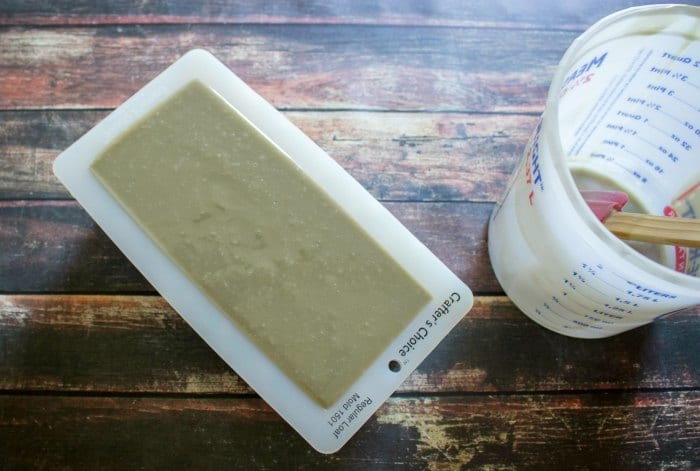
- Cure on coated cooling racks or sheets of wax paper about 4 weeks before using.
Substitution ideas for Dead Sea clay facial soap
If hemp oil isn’t available, try using avocado or kukui nut oil instead, without needing to change lye amount. Coconut oil can be replaced in equal measure with babassu oil. The lye amount will decrease slightly to 3.9 ounces (111 g).
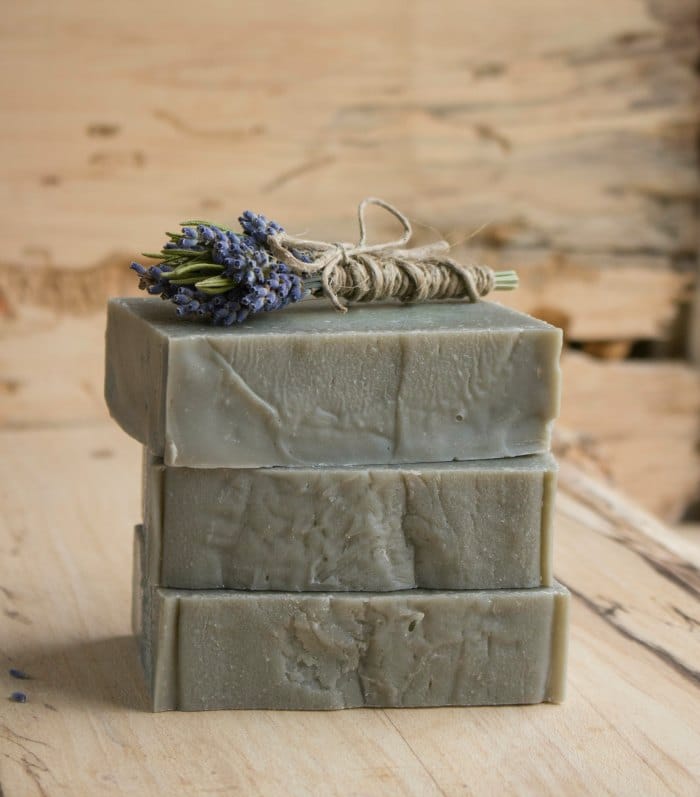
Simple & Natural Soap Making
Jan’s book, Simple & Natural Soap Making is due in bookstores on August 8th. You can order it now through Amazon for a special price.

Check out Jan’s other Soap Making Resources here.



Hi, what is the superfat rate? I have a different form that fits 350 grams of oils. Need to recalculate your recipe.
Please let me know. Thank you!